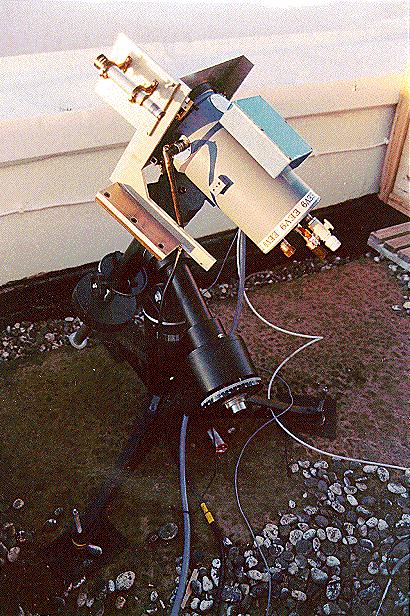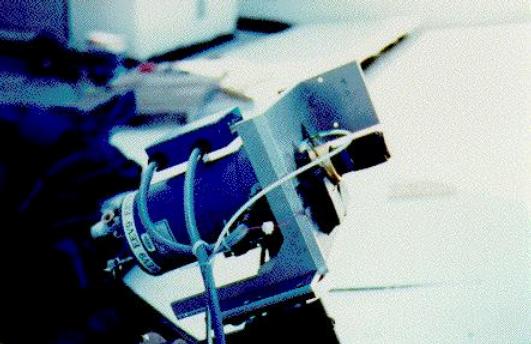| [jpg,99k] |
 |

|
| [jpg,99k] |
 |

|
CoCAM consists of a standard camera lenses (short zoom) imaging onto a large format, cryogenically cooled, EEV CCD (2x1k pixels) detector. Image collection is handled by standard ING CCD controller. Hale-Bopp is imaged in a white light (e.g. no filter) and also through a number of specially selected colour filters to highlight certain chemical features of Hale-Bopp, such as dust grains, CN and ionised water.
The images are downloaded onto a dedicated SUN Sparc computer system. Then images cab be processed. The entire archive of images (scientifically processed) are being made available to the scientific community at large (e.g. the European Comet Group).
Images obtained from CoCAM will provide an invaluable resource for astronomers in their investigations of this most important comet and lead to further insights into the primordial material out of which planet earth was formed.
Here is a sample of a recently obtained CoCAM image showing the complete 10x20 degree field of the instrument
![]() [gif,144k]
[gif,144k]
To demonstrate the sensitivity of CoCAM in a way that that amateur
astronomers will best appreciate, look at this 10s exposure of Orion's
belt and sword ![]() [gif,249k]
[gif,249k]
On the other hand, Comet Hale-Bopp pictures taken with CoCAM since its first light on the sixth of march can be found here.
Finally, this is a gallery of nice pictures without processing: